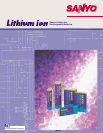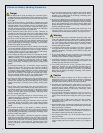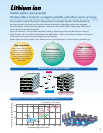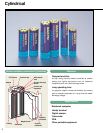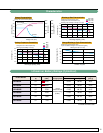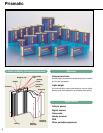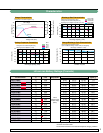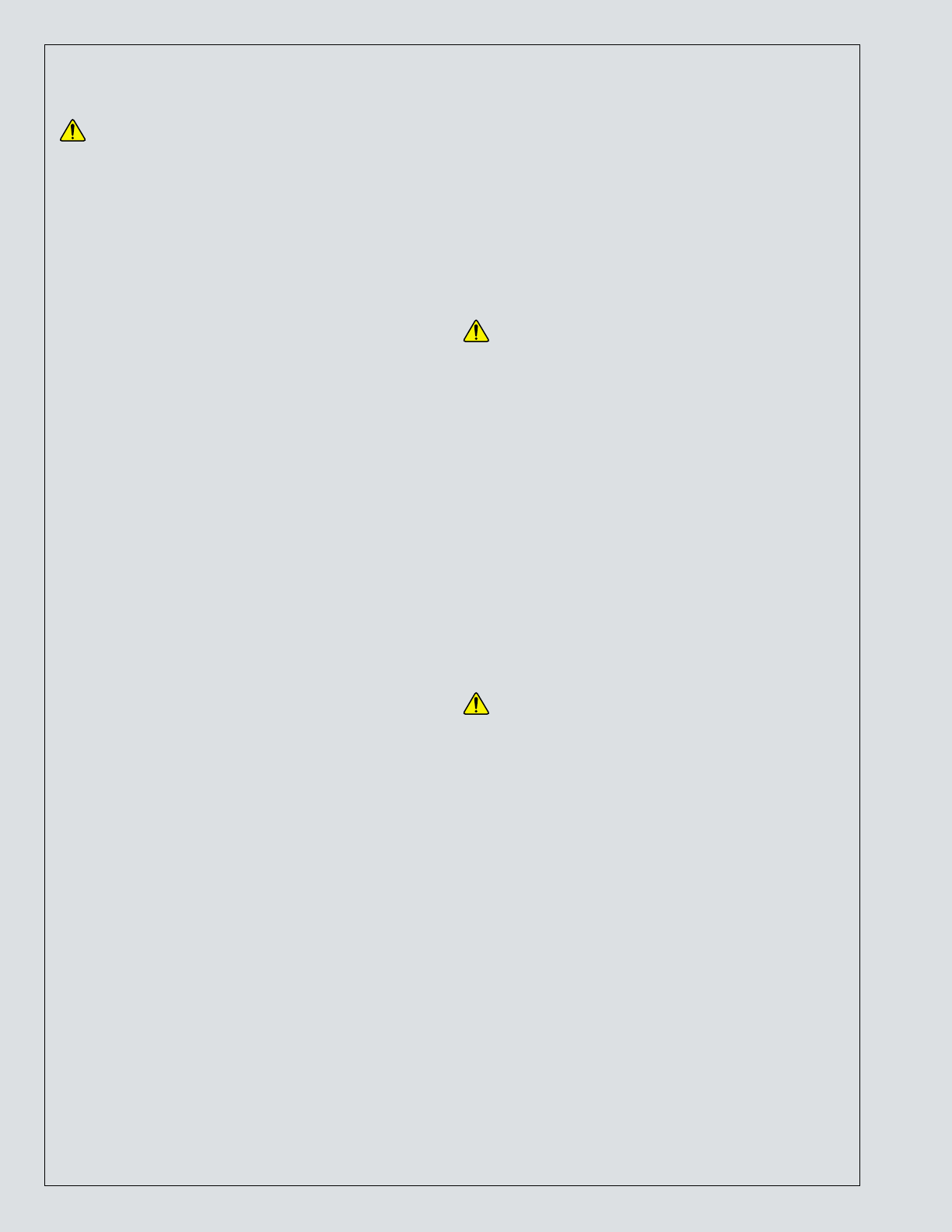
Lithium-ion Battery Handling Precautions
1 Do not disassemble or modify the battery pack. The battery pack is
equipped with built-in safety/protection features. Should these features
be disabled, the battery pack can leak acid, overheat, emit smoke, burst
and/or ignite.
2 Do not connect the positive (+) and negative (–) terminals with a metal
object such as wire. Do not transport or store the battery pack together
with metal objects such as necklaces, hair pins, etc. Otherwise, short-
circuiting will occur, overcurrent will flow, causing the battery pack to
leak acid, overheat, emit smoke, burst and/or ignite, or the metal object
such as wire, necklace or hair pin can generate heat.
3 Do not discard the battery pack into fire or heat it. Otherwise, its
insulation can melt down, its gas release vent or safety features will be
damaged and/or its electrolyte can ignite, possibly leading to acid
leakage, overheating, smoke emission, bursting and/or ignition on it.
4 Do not use or leave the battery pack near a heat source such as a fire
or a heater (80°C or higher). If the resin separator should be damaged
owing to overheating, internal short-circuiting may occur to the battery
pack, possibly leading to acid leakage, overheating, smoke emission,
bursting and/or ignition of the battery pack.
5 Do not immerse the battery pack in water or seawater, and do not allow
it to get wet. Otherwise, the protective features in it can be damaged, it
can be charged with extremely high current and voltage, abnormal
chemical reactions may occur in it, possibly leading to acid leakage,
overheating, smoke emission, bursting and/or ignition.
6 Do not recharge the battery pack near fire or in extremely hot weather.
Otherwise, hot temperatures can trigger its built-in protective features,
inhibiting recharging, or can damage the built-in protective features,
causing it to be charged with an extremely high current and voltage,
and, as a result, abnormal chemical reactions can occur in it, possibly
leading to acid leakage, overheating, smoke emission, bursting and/or
ignition.
7 To recharge the battery pack, use the battery charger specifically
designed for the purpose and observe the recharging conditions
specified by SANYO. A recharging operation under non-conforming
recharging conditions (higher temperature and larger voltage/current
than specified, modified battery charger, etc.) can cause the battery
pack to be overcharged, or charged with extremely high current,
abnormal chemical reaction can occur in it, possibly leading to acid
leakage, overheating, smoke emission, bursting and/or ignition.
8 Do not pierce the battery pack with a nail or other sharp objects, strike it
with a hammer, or step on it. Otherwise, the battery pack will become
damaged and deformed, internal short-circuiting can occur, possibly
leading to acid leakage, overheating, smoke emission, bursting and/or
ignition.
9 Do not strike or throw the battery pack. The impact might cause
leakage, overheating, smoke emission, bursting and/or ignition. Also, if
the protective feature in it becomes damaged, it could become charged
with an extremely high current and voltage, abnormal chemical
reactions can occur, which can lead acid leakage, overheating, smoke
emission, bursting and/or ignition.
10 Do not use an apparently damaged or deformed battery pack.
Otherwise, acid leakage, overheating, smoke emission, bursting and/or
ignition of the battery pack may occur.
11 Do not directly solder the battery pack. Otherwise, heat can melt down
its insulation, damage its gas release vent or safety features possibly
leading to acid leakage, overheating, smoke emission, bursting and/or
ignition.
12 Do not reverse the positive (+) and negative (–) terminals. Otherwise,
during recharging, the battery pack will be reverse-charged, abnormal
chemical reactions then may occur, or excessively high current can flow
during discharging possibly leading to acid leakage, overheating, smoke
emission, bursting and/or ignition.
13 The positive (+) and negative (–) terminals are arranged in a particular
orientation. Do not force the connection if you cannot easily connect the
battery pack terminals to the battery pack charger or other equipment.
Confirm that the terminals are correctly oriented. Reversing the
terminals will result in reverse-charging, possibly leading to acid
leakage, overheating, smoke emission, bursting and/or ignition of the
battery pack.
Danger
Caution
Warning
1 Do not use the battery pack in combination with primary battery packs
(such as dry-cell battery packs) or battery packs of different capacities
or brands. Otherwise, the battery pack can be overdischarged during
use or overcharged during recharging, abnormal chemical reactions
may occur, possibly leading to acid leakage, overheating, smoke
emission, bursting and/or ignition.
2 If recharging operation fails to complete even when a specified
recharging time has elapsed, immediately stop further recharging.
Otherwise, acid leakage, overheating, smoke emission, bursting and/or
ignition can occur.
3 Do not put the battery pack into a microwave oven or pressurized
container. Rapid heating or disrupted sealing can lead to acid leakage,
overheating, smoke emission, bursting and/or ignition.
4 If the battery pack leaks or gives off a bad odor, remove it from any
exposed flame. Otherwise, the leaking electrolyte may catch fire, and
the battery pack may emit smoke, burst or ignite.
5 If the battery pack gives off an odor, generates heat, becomes
discolored or deformed, or in any way appears abnormal during use,
recharging or storage, immediately remove it from the equipment or
battery pack charger and stop using it. Otherwise, the problematic
battery pack can develop acid leakage, overheating, smoke emission,
bursting and/or ignition.
1 Do not use or subject the battery pack to intense sunlight or hot
temperatures such as in a car in hot weather. Otherwise, acid leakage,
overheating and/or smoke emission can occur. Also, its guaranteed
performance will be lost and/or its service life will be shortened.
2 The battery pack incorporates built-in safety devices. Do not use it in a
location where static electricity (greater than the manufacturer’s
guarantee) may be present. Otherwise, the safety devices can be
damaged, possibly leading to acid leakage, overheating, smoke
emission, bursting and/or ignition.
3 The guaranteed recharging temperature range is 0 to 40°C. A
recharging operation outside this temperature range can lead to acid
leakage and/or overheating of the battery pack, and may cause damage
to it.
4 If acid leaking from the battery pack contacts your skin or clothing,
immediately wash it away with running water. Otherwise, skin
inflammation can occur.
5 Store the battery pack in a location where children cannot reach it. Also,
make sure that a child does not take out the battery pack from the
battery pack charger or equipment.
6 Before use, carefully study the Operation Manual and Precautions. For
further information, contact a nearest SANYO distributor or
representative. Safekeep the manual for future reference.
7 For recharging procedures, refer to the Operation Manual of your
battery pack charger.
8 If you find rust, a bad odor, overheating and/or other irregularities when
using the battery pack for the first time, return it to your supplier or
vendor.
1
14 Do not connect the battery pack to an electrical outlet, vehicle cigarette
lighter, etc. When subjected to large voltage, overcurrent can flow on
the battery pack, possibly leading to acid leakage, overheating, smoke
emission, bursting and/or ignition.
15 Do not use the battery pack for a purpose other than those specified.
Otherwise, its guaranteed performance will be lost and/or its service life
will be shortened. Depending on the equipment in which the battery
pack is used, excessively high current can flow through battery pack,
possibly damaging it and leading to acid leakage, overheating, smoke
emission, bursting and/or ignition.
16 If the battery pack leaks, and the electrolyte gets into the eyes, do not
rub them. Instead, rinse the eyes with clean running water and
immediately seek medical attention. Otherwise, eye injury may result.



